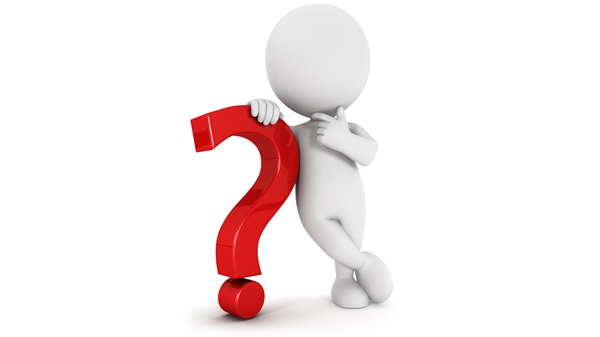
In every human cell, you will find the essential trace mineral, iron. It helps regulate the growth of cells, and is a valuable component of the body’s muscles.
When we lack iron, the body produces less hemoglobin, therefore supplying less oxygen to the tissues. We store iron in the spleen, liver, and bone marrow, which is where we get extra iron for hemoglobin production. Iron is very important and without it, you might experience iron deficiency anemia, considered the most common nutrient deficiency in the U.S. However, discovering whether you are getting enough iron can be quite the head scratcher.
Where Does Iron Come From?
When you eat foods containing iron, there will be two forms: heme and non-heme. Heme iron is found in animal foods that originally included myoglobin and hemoglobin. Foods such as red meats, fish, and poultry contain 40% heme iron.
Plant-based foods are your source of non-heme iron, including lentils and other legumes. Non-heme iron makes all of the iron in plant-based foods, and 60% of animal foods.
Also, many mineral and iron supplements are adequate ways to obtain your iron levels.
How Much Iron Are You Getting?
Your diet may contain many iron-rich foods, but it doesn’t mean your body is absorbing them. Many factors are at play here.
If you are a healthy adult, you absorb 10-15% of the iron in foods. It is possible to absorb heme iron up to 35% more efficiently than non-heme iron, which absorbs two to 20% from food. You absorb 10-30% of heme iron. When you eat a meaty meal, this helps improves non-heme absorption.
The absorption in heme iron is not affected by other nutrients in food, while less non-heme is absorbed from calcium, tannis (tea), polyphenols, phytates (whole grains, legumes), and soybean proteins.
This is why vegetarians (and vegans) have to pay close attention to their iron levels because they only consume non-heme iron foods. Vegetarians are recommended to obtain 1.8 times more iron than non-vegetarians. Plant-based foods contain large quantities of iron, and the vitamin C in the food help increase the absorption of non-heme iron, which is important for vegetarians.
When you have enough iron stored in your organs, the less you need to absorb from your food. This is the body’s protection mechanism from iron overload toxic effects.
How Much Iron Should You Get?
How do you know if your body needs more iron? It really depends on your age and gender:
- Infants, 7-12 months: 11 mg
- Children, 1-3 years: 7 mg
- Children, 4-8 years: 10 mg
- Children, 9-13: 8 mg
- Boys, 14-18: 11 mg
- Girls, 14-18: 15 mg
- Men, 19 and older: 8 mg
- Women, 19-50 years: 18 mg
- Women, 50 and older: 8 mg
- Pregnant Women, 14-50 years: 27 mg
- Lactating Women, 14-18 years: 10 mg
- Lactating Women, 19-50 years: 9 mg
It is recommended that you do not exceed 45 mg of iron a day.
Iron-Rich Foods for Vegetarians
Next time you’re cooking a meal, consider preparing these 12 non-heme iron-rich foods:
- Soybeans (organic), 1 cup: 8.8 mg
- Blackstrap molasses, 2 tbsp: 7.2 mg
- Lentils, 1 cup: 6.6 mg
- Spinach, 1 cup: 6.4 mg
- Chickpeas, 1 cup: 4.7 mg
- Black-eyed peas, 1 cup: 4.3 mg
- Swiss chard, 1 cup: 4 mg
- Kidney beans, 1 cup: 3.9 mg
- Black beans, 1 cup: 3.6 mg
- Pinto beans, 1 cup: 3.6 mg
- Quinoa, 1 cup: 2.8 mg
- Tahini, 2 tbsp: 2.7 mg
Iron-Rich Foods for Meat-Eaters
- Clams, mollusks, mussels, oysters, or beef or chicken liver, 3 ounces: 3.5 mg or more of heme iron.
- Cooked beef, canned sardines in oil, or cooked turkey, 3 ounces: 2.1 mg or more of heme iron.
Try to purchase organic, free-range cuts of meat whenever possible.
The FoodsForBetterHealth Final Thought
Whether you eat meat or are a vegetarian, know that iron in a very important mineral in the body. It is important not just in the foods we eat, but also how we absorb the different types of iron as well. Eat plenty of iron-rich foods!
Sources:
“Iron: An Important Mineral in Your Diet,” University of Rochester Medical Center web site; http://www.urmc.rochester.edu/encyclopedia/content.aspx?ContentTypeID=1&ContentID=547.
“Iron,” The World’s Healthiest Foods web site; http://www.whfoods.com/genpage.php?tname=nutrient&dbid=70.
“Food Sources of Iron,” Dietitians of Canada web site, May 11, 2012; http://www.dietitians.ca/Nutrition-Resources-A-Z/Factsheets/Minerals/Food-Sources-of-Iron.aspx.
“Iron-Rich Foods,” WebMD web site; http://www.webmd.com/diet/iron-rich-foods.
Mangels, R., PhD., R.D., “Iron in the Vegan Diet,” The Vegetarian Resource Group web site; http://www.vrg.org/nutrition/iron.php.
Watson, S., “What You Need to Know About Iron Supplements,” WebMD web site; http://www.webmd.com/vitamins-and-supplements/lifestyle-guide-11/iron-supplements?page=1.












